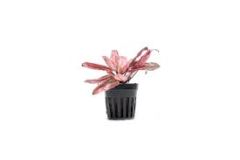Cryptocoryne Easy Care Tips for Thriving Aquarium Plants
Looking to enhance your aquarium with Cryptocoryne, but unsure where to start? From selecting the right species to mastering their care, this article delivers practical tips for successful Cryptocoryne cultivation. Dive into the essentials of substrate, lighting, and water conditions tailored to these adaptable and appealing aquatic plants.
Table of Contents
Key Takeaways
- Cryptocoryne species are highly adaptable aquatic plants, with a diverse range of environments from which they originate, and they are valued for their tolerance to diverse aquarium conditions.
- Effective Cryptocoryne cultivation involves careful attention to substrate, lighting, and water parameters to ensure healthy growth, with specific needs varying among species.
- Issues such as Crypt melt and algae can arise with Cryptocoryne plants, but these can usually be mitigated through consistent water conditions and regular tank maintenance.
Discovering Cryptocoryne: A Diverse Genus of Aquatic Plants
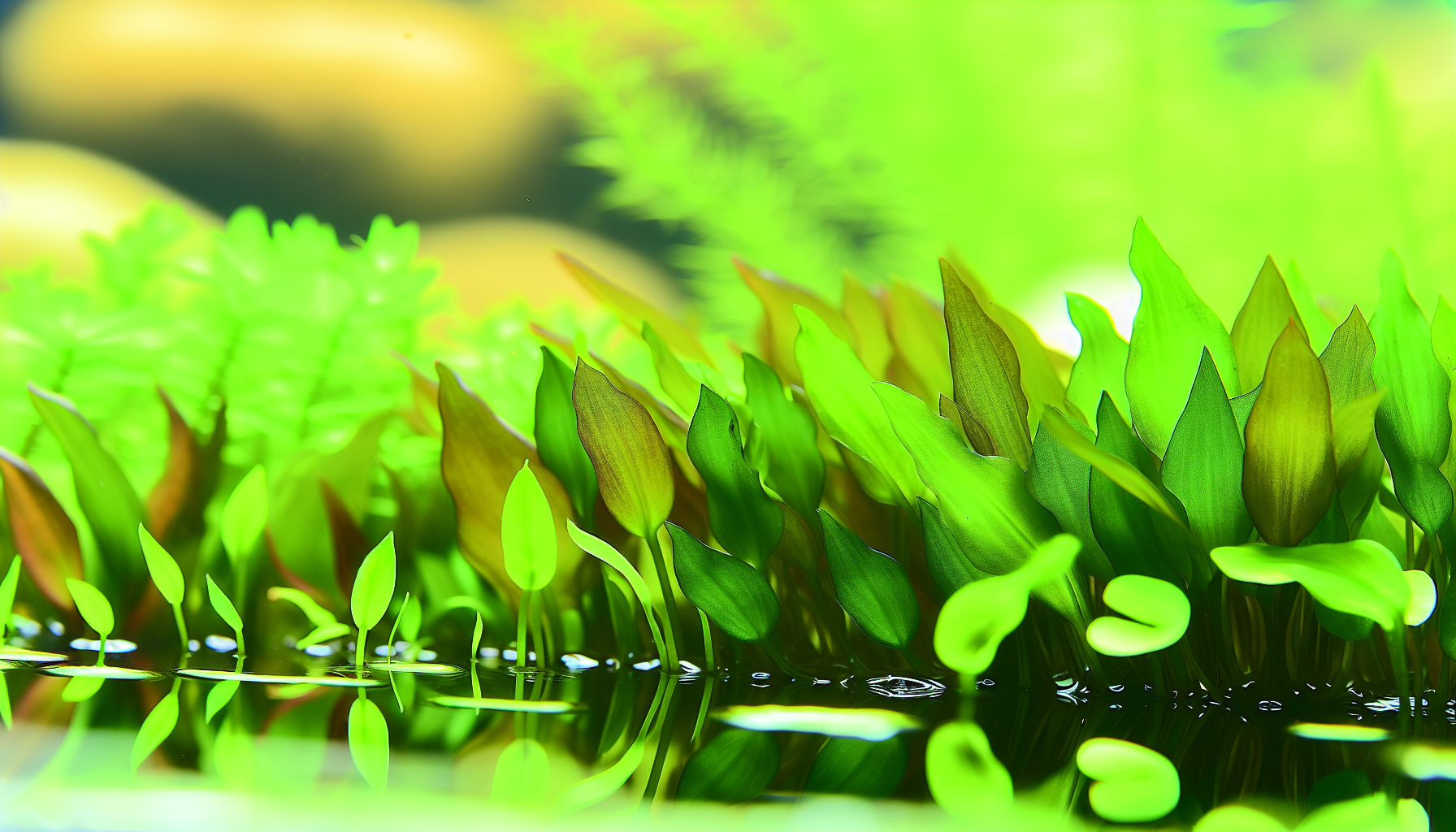
From the tidal zones of India to the clearwater rivers of New Guinea, and even in Sri Lanka, Cryptocoryne plants have carved a niche for themselves in a wide array of environments, including other crypts. Their impressive adaptability is evident in the remarkable habitat adaptations of species like Cryptocoryne ciliata, auriculata, and keei. The genus Cryptocoryne boasts a rich tapestry of unique species like the thick, spoon-shaped Cryptocoryne lingua and the elusive Cryptocoryne zaidiana, which is only found in northern Sarawak.
Although their origin varies, these resilient aquarium plants all share one trait - tolerance to diverse conditions. Their adaptability and their aesthetic allure have made them beloved to aquascapists and a common choice in the aquatic hobby as an aquatic plant.
The Art of Cultivating Cryptocorynes
Cultivating Cryptocorynes is an art, a delightful blend of science and aesthetic sensibility. The canvas? Your aquarium. The tools? Substrate, lighting, and water parameters. And the masterpiece? A thriving, vibrant underwater garden, teeming with healthy, lush Cryptocoryne plants.
Substrate and Root Health
The health of any Cryptocoryne stems from its underground foundation. For optimal growth, they require:
- A nutrient-rich substrate for their extensive root system
- A quality plant substrate, such as UNS Controsoil, which supplies essential nutrients conducive to root development
- In environments with sand or gravel substrates, root tabs can compensate for missing nutrients, ensuring Cryptocorynes maintain a healthy growth.
Planting Cryptocorynes requires a delicate touch. The plant should be positioned in a way that prevents burying the crown, particularly in the case of Cryptocoryne parva, to encourage the formation of deep and healthy root systems.
Lighting Needs for Lush Growth
The growth and aesthetic appeal of Cryptocorynes are significantly influenced by lighting. Take Cryptocoryne Undulata, for instance. Under low light levels, it produces lighter green leaves, while higher light intensity results in darker colored leaves. For Cryptocoryne spiralis ‘Tiger’, strong lighting is the catalyst that brings out its intense reds, highlighting its tiger skin pattern.
While Cryptocoryne species generally thrive in low-light, low-tech setups, some, like Cryptocoryne wendtii, can achieve taller growth when provided with lower light intensities. For species sensitive to strong lighting, like Cryptocoryne beckettii ‘Petchii’, floating plants can provide shade, ensuring ideal low light conditions.
Water Parameters for Cryptocoryne Success
Similar to how a skilled chef maintains precise temperatures and timings for a culinary masterpiece, a successful aquarist comprehends the need for consistent water parameters for thriving Cryptocoryne plants. These plants generally flourish across a pH range of 6.8 to 7.6, with the capability to endure weakly acidic to alkaline conditions. Their versatility also extends to temperature, thriving in conditions ranging from 68 to 82°F, accommodating both tropical and cool water tanks.
Cryptocorynes also showcase adaptability in terms of water hardness. Whether it’s hard water with a GH of 10 to 13 and KH of 7 to 9 or softer water conditions with GH below 6.0 and KH below 1.0, Cryptocorynes can grow successfully. However, maintaining these conditions consistently is critical to avoid issues like crypt melt and algae proliferation.
Certain species have specific requirements for optimal growth, like Cryptocoryne beckettii ‘Petchii’, which necessitates high calcium levels, alongside other nutrients like CO2, phosphate, iron, and nitrate.
Spotlight on Popular Cryptocoryne Varieties
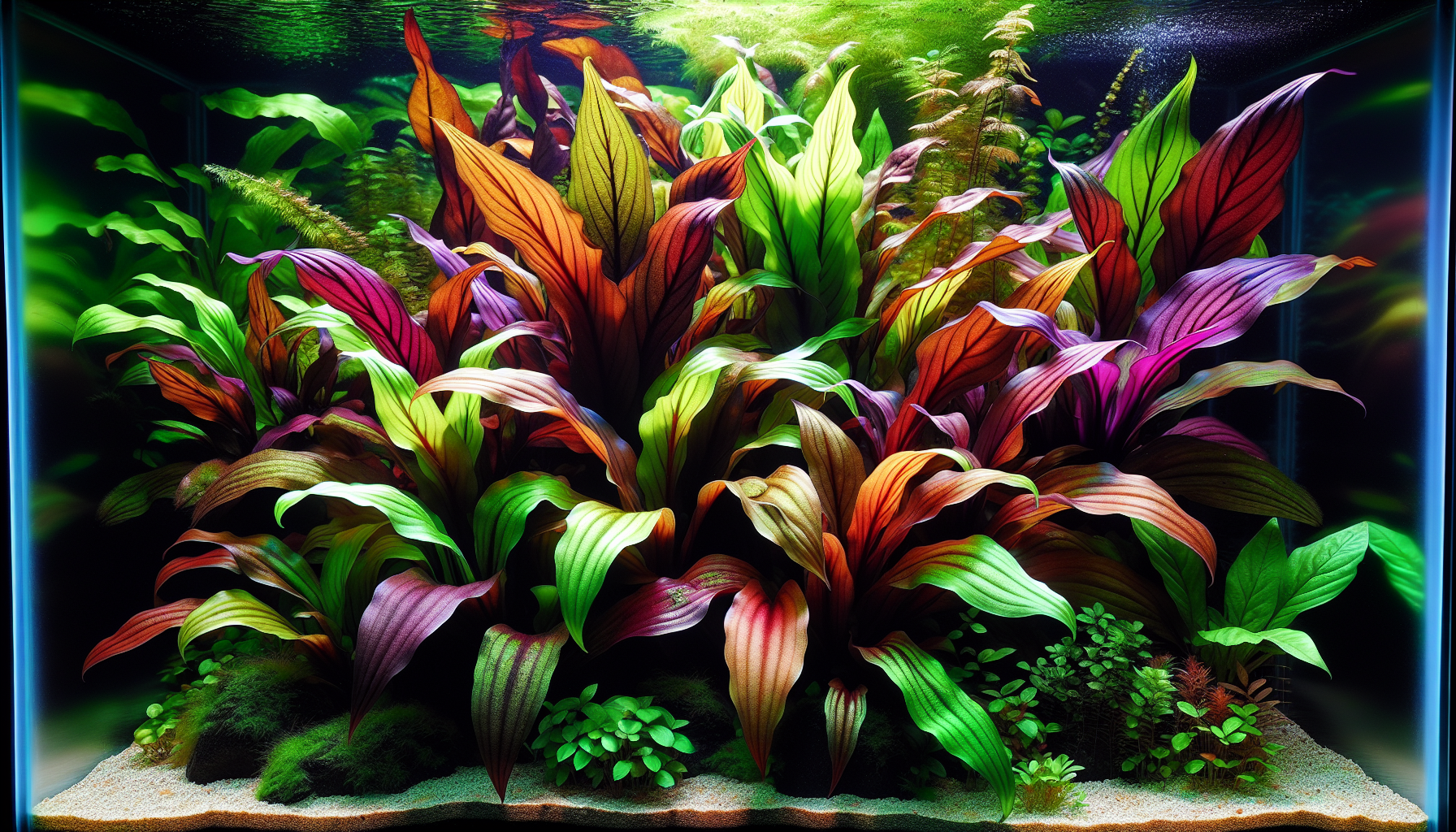
In the diverse world of Cryptocorynes, some species stand out more than others. These popular varieties, like Cryptocoryne wendtii and Cryptocoryne spiralis, have become favorites among aquascapists for their appealing leaf shapes and colors. Each of these varieties brings its unique charm to the aquarium, offering a delightful blend of colors and forms.
Cryptocoryne Wendtii: The Versatile Favorite
Among the star-studded line-up of Cryptocoryne plants, Cryptocoryne wendtii holds a special place. Admired for its long, dark green ruffled leaves, which can vary in color from light green to reddish-brown depending on light conditions, wendtii is a versatile plant that adds a touch of elegance to any aquarium. Varieties like Cryptocoryne wendtii ‘Pink Panther’ and ‘Mi Oya’ offer unique colors and growth patterns, from vibrant pink to green and reddish-brown hues, suitable for different aquarium placements.
Cryptocoryne wendtii can be planted as a foreground or midground plant, ensuring roots have nutrient access in the substrate. The ‘Green’ variety of Cryptocoryne wendtii thrives in low-light conditions, growing up to 6-8 inches, further showcasing the adaptability of the species. The propagation of Cryptocoryne wendtii is straightforward, making it a favorite among aquarists who can easily share or expand their plant collection.
Cryptocoryne Parva: The Charming Slow Grower
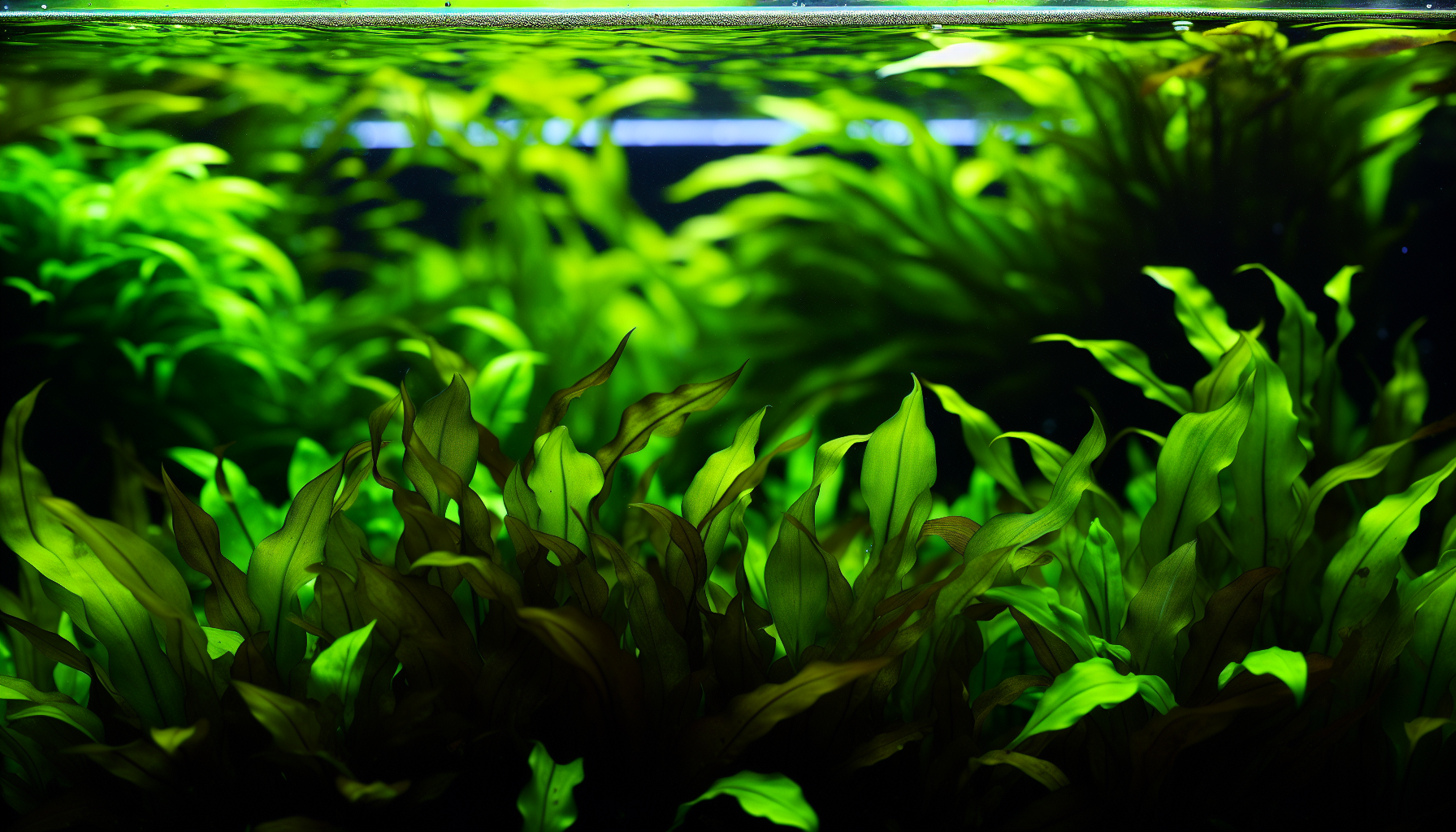
If Cryptocoryne wendtii is the versatile favorite, then Cryptocoryne parva is the charming slow grower. Known for its small-sized green leaves, Cryptocoryne parva forms a lush carpet in the aquarium, albeit at a slow pace. This slow growth requires more light than most other Cryptocoryne species, but the results are well worth the wait.
To cultivate Cryptocoryne parva effectively, follow these steps:
- Separate individual plants and plant them a few centimeters apart.
- After six months, the plants will form a cohesive low group and reach full coverage.
- Cryptocoryne parva is highly recommended as a foreground plant due to its small stature.
- In smaller aquariums, it can also be strategically placed in the midground to maintain proper scale and visual interest.
Cryptocoryne Beckettii: The Ruffled Water Trumpet
Among the myriad of Cryptocoryne varieties, Cryptocoryne beckettii stands out with its lanky, deep red stems and dark green leaves, which contribute to its striking appearance and ruffled texture. This plant grows naturally in swampy substrates in the wild but is adaptable to both submerged and emersed cultivation in aquariums.
Cryptocoryne beckettii can be grown as an epiphyte by attaching it to hardscape elements like rocks or driftwood, where it will secure itself using its roots. This plant’s variety ‘Petchii’ is especially popular for being low maintenance and compact, making it suitable for aquarists of all levels of experience.
Tissue Culture Plants: The Pest-Free Choice
Tissue culture plants offer a pest-free and sterile alternative to live plants for aquariums. These 100% sterile plants are:
- Free from pests such as snails and planarians
- Devoid of algae
- Cultivated in a laboratory environment
- Safe for established tanks as they are devoid of harmful pesticides, pathogens, and diseases.
Tissue culture packs typically contain a high number of plantlets, offering aquarists a cost-effective and valuable amount of plants. The preparation for planting tissue culture cryptocoryne involves a simple rinse of the nutrient medium, and prompt planting is recommended to maintain their condition.
Troubleshooting Common Crypt Issues
Cryptocoryne plants, despite their hardy nature, are not immune to issues. A common problem is ‘Crypt melt’, a phenomenon where the plant loses leaves while the root system generally remains intact when transitioning to submerged growth or when exposed to drastic environmental changes. To prevent crypt melt, maintaining consistent water parameters and lighting levels is key; filtration also plays a crucial role in sustaining good water quality and avoiding potential ammonia spikes from plant debris.
Algae growth can be triggered by decaying leaves, especially during crypt melt. Therefore, avoiding plant damage and ensuring good tank maintenance are important steps to manage algae issues. Tissue cultured cryptocoryne plants may initially experience a higher rate of melt due to their sterile lab conditions; extra care may be required during the adaptation phase to the aquarium environment.
Enhancing Your Aquarium’s Aesthetics with Crypts
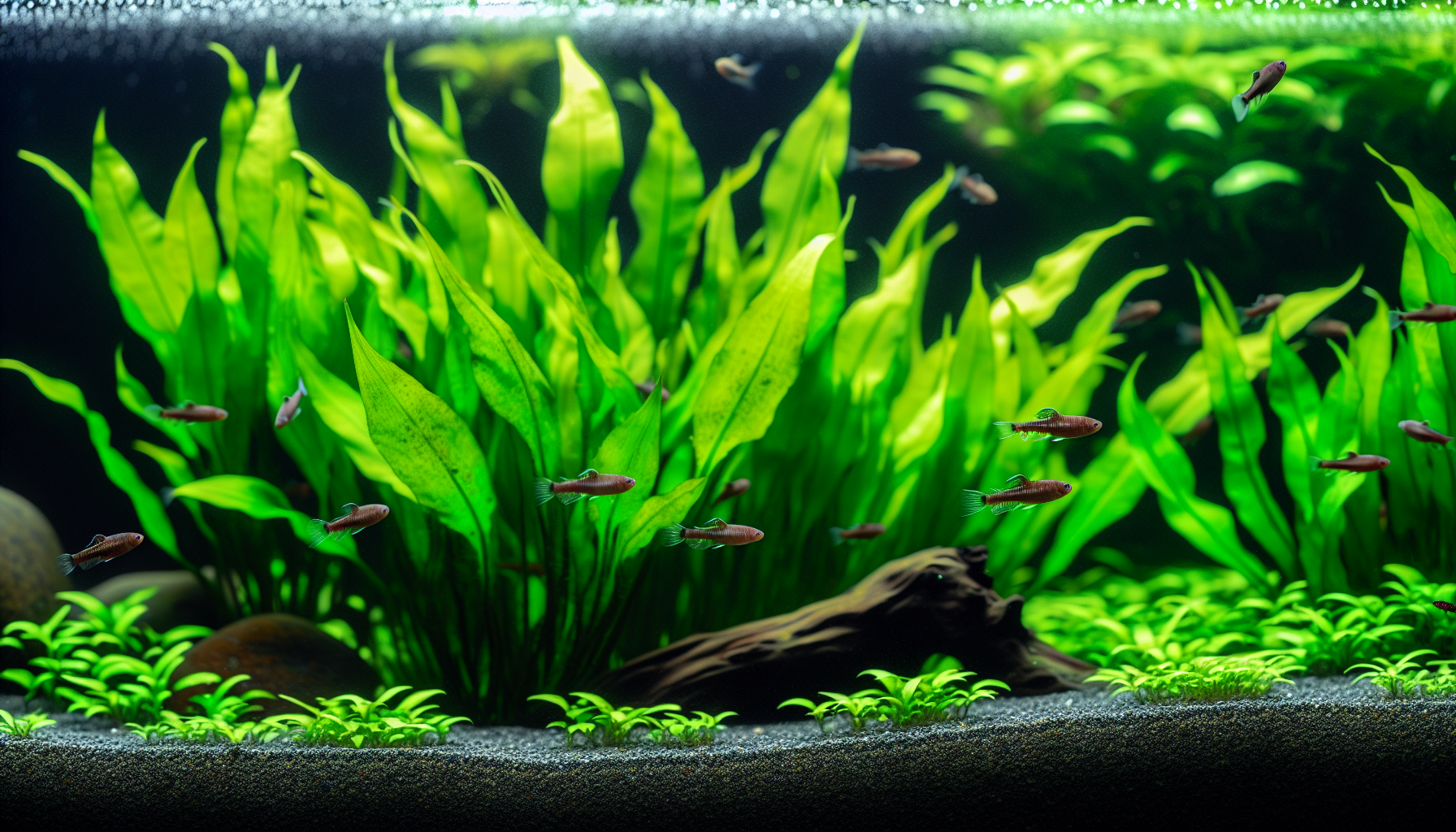
Cryptocoryne plants are not just aquatic organisms – they serve as the artistic brush strokes on the canvas of your aquarium. With strategic placement, they can enhance the visual appeal of your aquarium, creating a captivating underwater landscape.
Foreground Placement Tips
The visual aesthetics of an aquarium can greatly depend on the foreground placement. Some ideal plants for the aquarium’s foreground include:
- Cryptocoryne parva, with its small size, is particularly well-suited to creating a lush foreground in an aquarium, serving both aesthetic and spatial functions.
- Cryptocoryne lutea ‘Hobbit’
- Cryptocoryne minima
These smallest species are ideal for the aquarium’s foreground due to their smaller growth height and compact appearance.
Cryptocoryne parva’s grass-like leaves can create a dense carpet effect, further enhancing the sense of a lush and fully planted foreground. However, cultivating Cryptocoryne parva requires patience due to its slow growth rate, necessitating appropriate lighting and care for successful cultivation.
Mid Ground and Background Strategies
Larger Cryptocoryne species are ideal for midground and background placement. Cryptocoryne crispatula var. balansae, with its long, fluted leaves, adds height and a splash of bright green up to 60 cm, making it an ideal choice for the background. Cryptocoryne wendtii ‘Green Gecko’, with its vibrant green color and unique leaf texture, serves as an eye-catching mid ground plant with light green leaves.
Placing larger Cryptocoryne species behind smaller foreground plants creates a lush, layered effect that enhances the sense of depth in aquascaping. The result is a visually rich and dynamic aquatic landscape that captivates the viewer.
The Hardy Nature of Cryptocoryne in Different Environments
The hardy nature of Cryptocoryne plants, which are often referred to as hardy aquarium plants, is one of the key reasons for their popularity among aquarium hobbyists. These plants are true survivors, tolerating a pH range from 5 to 8 and adapting to various water hardness from soft to medium-hard. Some varieties like Cryptocoryne wendtii prosper across various chemical water conditions and pH levels, whereas Cryptocoryne crispatula ‘Balansae’ prefers hard, alkaline water, demonstrating the genus’ adaptability.
Their ability to withstand temperatures ranging from 15°C to 30°C equips Cryptocoryne for survival in tropical aquariums without stringent temperature control. Some species, like Cryptocoryne parva, are even compatible with warmer water, making them ideal for low-maintenance planted Discus tanks. While they can adjust to varied lighting situations, lower to moderate lighting is often recommended to prevent potential light damage and align with the plants’ natural low-light habitats.
Despite occasional issues like crypt melt due to changes in water quality, dosing, and other environmental factors, their ability to generate new foliage from healthy rhizomes is a testimony to their resilience.
Cryptocoryne Propagation Techniques

Apart from being attractive and hardy, Cryptocoryne plants are also easy to propagate. This makes them a valuable addition to any aquarist’s collection, whether you’re looking to enhance your current aquarium or share your love for these plants with others.
Cryptocoryne wendtii, for instance, can be propagated by dividing the plant into smaller clumps or by utilizing the runners that develop from its roots. Cryptocoryne beckettii ‘Petchii’ is propagated using its runners, which can be cut and replanted in the substrate. Even slow-growing species like Cryptocoryne walkeri and Cryptocoryne Undulata, which spreads by adventitious plantlets, require patience in their propagation but are not particular about water parameters.
Summary
In conclusion, Cryptocoryne plants present a captivating blend of diversity, resilience, and aesthetic appeal. Whether you’re a novice aquarist setting up your first aquarium or a seasoned hobbyist looking to enhance an existing underwater landscape, Cryptocorynes offer a wealth of options. With their hardy nature, adaptability to various environments, and appealing growth patterns, they truly bring a piece of the diverse underwater world into your living room.
Frequently Asked Questions
When planting cryptocoryne, bury the roots and keep the crown above the ground to prevent melting. If the emersed leaves fall off, don't discard the plant.
Yes, Cryptocoryne can grow out of water in moist to saturated terrestrial conditions. It is a popular aquarium plant that can thrive both underwater and in moist environments.
Yes, Cryptocoryne parva is easy to grow, making it a suitable choice for beginner aquarists. It is a slower-growing carpeting plant, so patience is needed for it to fully develop.
Yes, Cryptocoryne can grow without CO2 in the aquarium, making it a suitable choice for both beginners and experienced aquarists. Other options that do not require CO2 include Anubias, Java fern, Amazon sword, and vallisneria.
Yes, Cryptocoryne plants need to be planted in substrate and provided with root tabs for optimal growth.



 Shrimp
Shrimp Fish
Fish Crab &
Crab & Plants
Plants Foods
Foods Snails
Snails